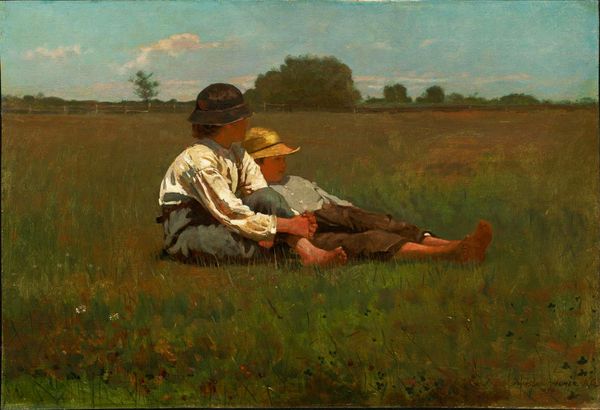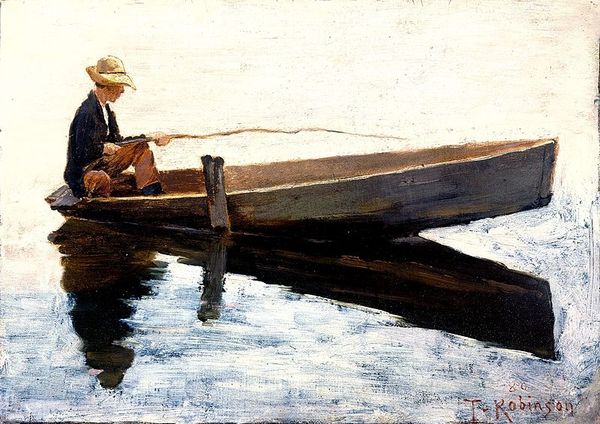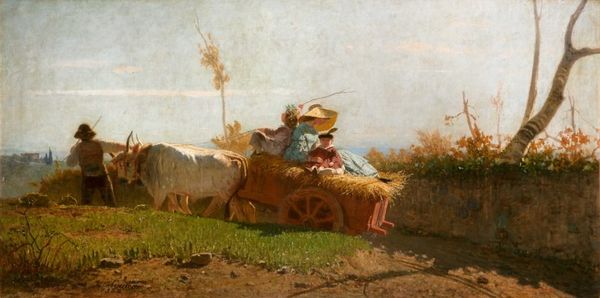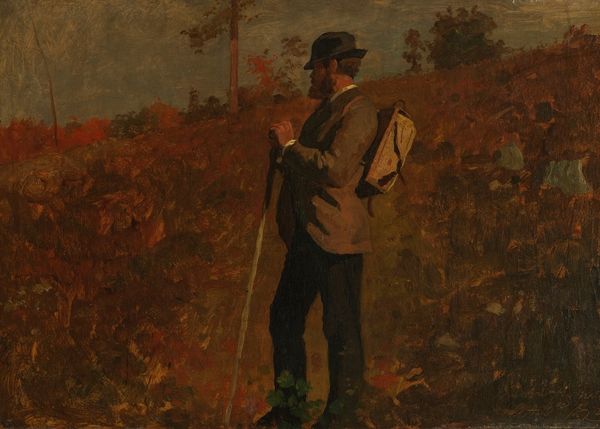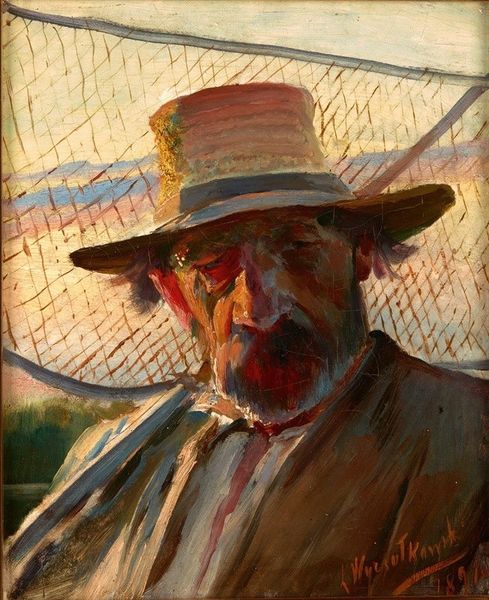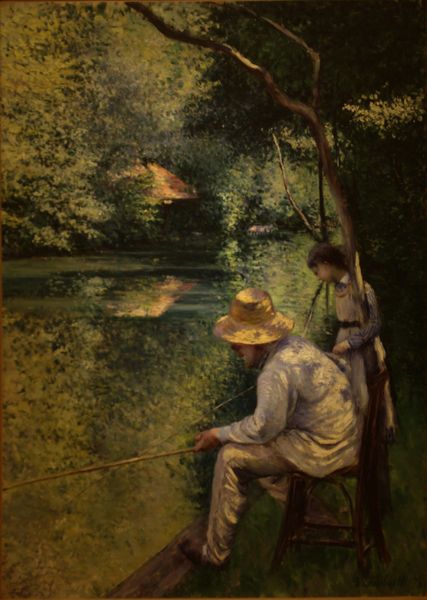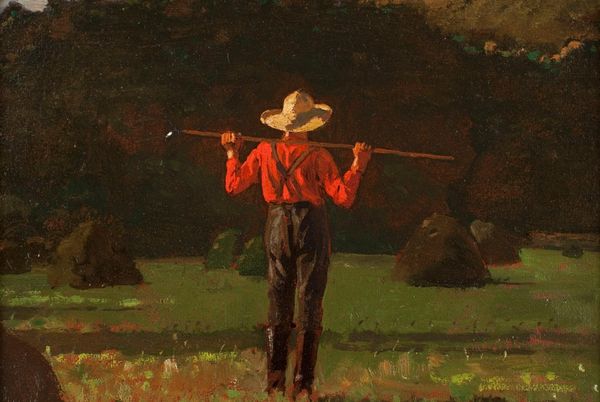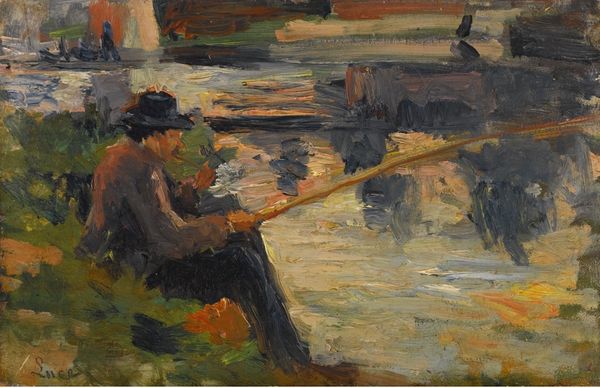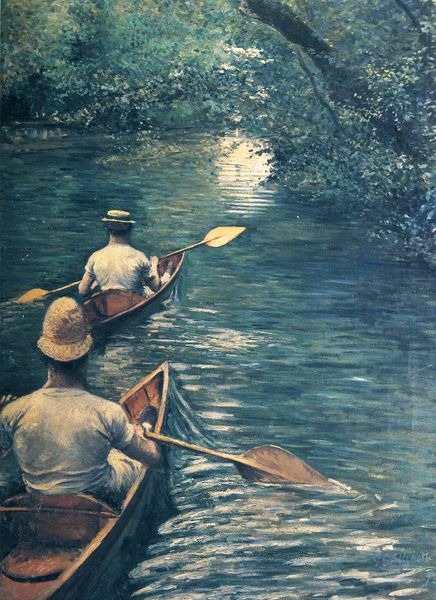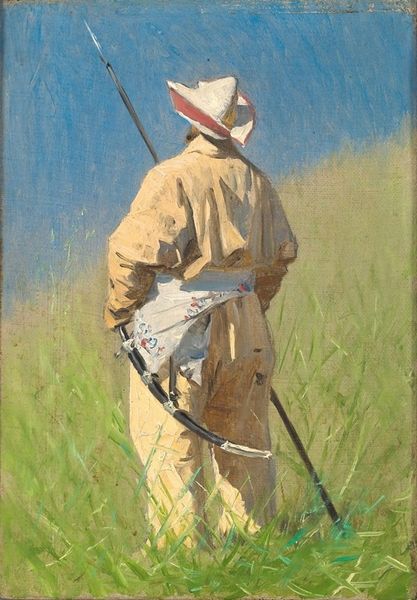
Copyright: Public Domain: Artvee
Editor: So, we're looking at "An Out of Doors Study," an 1889 oil painting by John Singer Sargent. It feels very personal and intimate, almost like a snapshot of a private moment. What do you make of this seemingly casual scene, particularly its place in the art world at the time? Curator: It's tempting to see this as purely representational, but that's too simple. Sargent was very aware of the rising interest in *en plein air* painting and capturing fleeting moments. This wasn't just about painting outdoors; it was about capturing a specific, upper-middle-class lifestyle that was emerging at the time, with new emphasis on leisure, and cultivated observation of nature. Notice how the sitters wear specific attire. What do you think these elements might signal about their identity? Editor: It suggests a certain social status, for sure. Their clothes, the canoe...it's a scene of comfortable leisure. So it’s not *just* a painting of a nice day? Curator: Precisely. Consider how Impressionism and similar styles became markers of cultural capital. Displaying these paintings became another signal. And beyond leisure, we can read something about the power dynamics between the artist and his model, and even the very act of seeing. Do you find that concept convincing? Editor: Absolutely. Knowing that Sargent was conscious of the social implications adds a whole new layer of understanding to what I initially perceived as a simple landscape painting. I’ll definitely keep that in mind in the future! Curator: Indeed! Always ask yourself: what social narratives are being subtly reinforced, or perhaps challenged, in any artwork you're viewing? It’s more than just aesthetics.
Comments
No comments
Be the first to comment and join the conversation on the ultimate creative platform.

